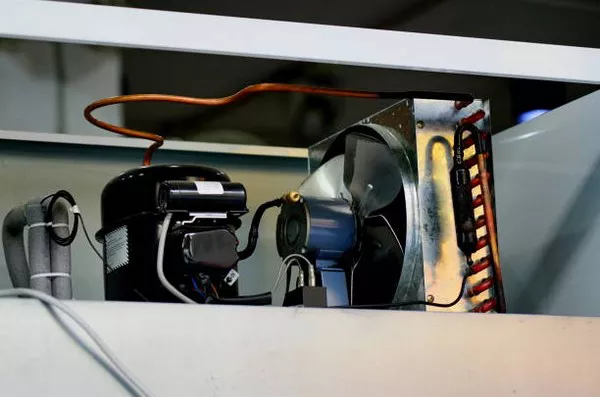Industrial refrigeration is a critical component in various sectors, playing a pivotal role in preserving perishable goods, maintaining production processes, and ensuring the efficient operation of countless industries. This article delves into the intricate details of how industrial refrigeration systems work, exploring the key components and processes that contribute to their functionality.
Key Components of Industrial Refrigeration Systems
Compressors
At the heart of any industrial refrigeration system lies the compressor, a mechanical device responsible for increasing the pressure and temperature of the refrigerant vapor. This crucial component plays a vital role in circulating the refrigerant through the system, facilitating the heat exchange process. Compressors are categorized into various types, including reciprocating, rotary, and centrifugal, each with its unique advantages and applications.
Reciprocating compressors utilize pistons to compress the refrigerant, while rotary compressors use rotating mechanisms. Centrifugal compressors, on the other hand, rely on high-speed rotation to achieve compression. The choice of compressor depends on factors such as system size, application requirements, and energy efficiency considerations.
Condensers
After the refrigerant is compressed and its temperature and pressure elevated, it moves to the condenser, another critical component in the industrial refrigeration system. The condenser facilitates the transfer of heat from the refrigerant to the surrounding environment, causing the vapor to condense into a liquid. This phase change releases heat, allowing the refrigerant to shed the energy gained during compression.
Condensers are typically air-cooled or water-cooled. Air-cooled condensers dissipate heat by passing air over coils containing the hot refrigerant, while water-cooled condensers use water to absorb the heat. The choice between these two types depends on factors such as available resources, ambient conditions, and energy efficiency goals.
Evaporators
Once the refrigerant has been condensed into a liquid state, it enters the evaporator, where it undergoes another phase change – this time from liquid to vapor. The evaporator is responsible for absorbing heat from the desired space or product, causing the refrigerant to evaporate. This absorption of heat results in cooling, making it a crucial step in the refrigeration process.
Evaporators are designed to maximize heat transfer efficiency, and they come in various configurations, including shell-and-tube, plate, and finned-tube evaporators. The selection depends on factors such as the nature of the application, space constraints, and the desired cooling capacity.
Expansion Devices
The refrigerant, now in a vaporized state, returns to the compressor to restart the cycle. Before reaching the compressor, it passes through an expansion device, which regulates the refrigerant flow and reduces its pressure. This reduction in pressure causes a drop in temperature, preparing the refrigerant for the evaporation process in the evaporator.
Expansion devices can take the form of thermostatic expansion valves or capillary tubes, with their selection dependent on factors such as system size, refrigerant type, and temperature requirements. Proper sizing and adjustment of the expansion device are crucial for maintaining optimal system performance.
Refrigeration Cycle Overview
Understanding the industrial refrigeration cycle involves grasping how these key components work together seamlessly to maintain temperature control. The cycle begins with the compressor, where the low-pressure vaporized refrigerant is compressed, leading to an increase in temperature and pressure. The hot, high-pressure refrigerant then moves to the condenser, where it releases heat to the surrounding environment and transforms into a liquid state.
The liquid refrigerant then travels to the evaporator, absorbing heat from the desired space or product and evaporating back into a vapor. The cycle repeats as the vaporized refrigerant returns to the compressor via the expansion device, and the process begins anew.
Energy Efficiency Considerations
Industrial refrigeration systems are energy-intensive, making energy efficiency a top priority for operators seeking to reduce operational costs and environmental impact. Implementing energy-efficient components, regular maintenance, and optimizing system design are crucial steps in achieving higher efficiency.
Variable frequency drives (VFDs) on compressors, for example, allow for speed modulation based on load requirements, minimizing energy consumption during periods of lower demand. Additionally, utilizing high-efficiency condensers and evaporators, along with proper insulation and system controls, contributes to overall energy savings.
Conclusion
Industrial refrigeration systems are intricate networks of components working harmoniously to maintain optimal temperatures in diverse applications. From compressors to condensers, evaporators, and expansion devices, each element plays a crucial role in the refrigeration cycle. Understanding these components and the overall system design is essential for ensuring the efficiency, reliability, and longevity of industrial refrigeration systems in a wide range of industrial settings.

